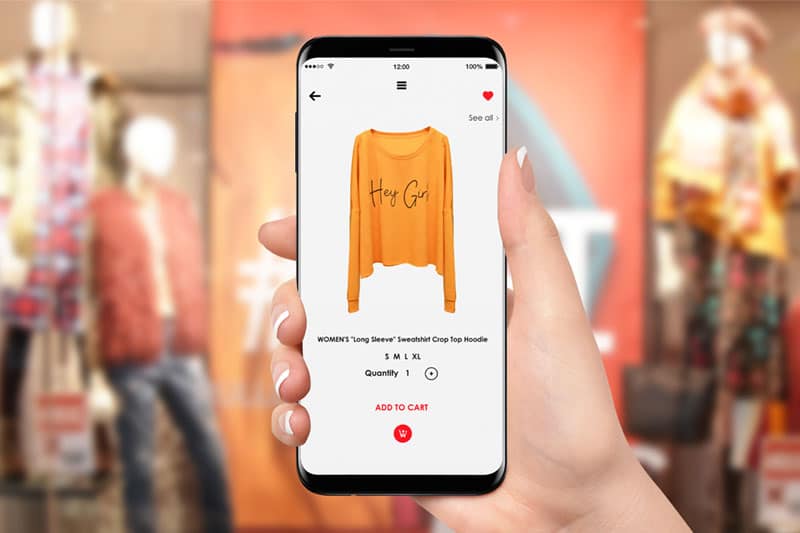
How much money are you losing because you can’t keep up with stock replenishment? Recent studies indicate that inventory supplies at U.S. retailers are only 63% accurate, with 34% of stock shipped late. Overstocking brings its own challenges, with carrying costs for items totaling 10% to 20% of their sale value. Therefore, retailers must walk a fine line between carrying too much and too little inventory. Find out what different stock replenishment strategies have to offer and how to choose the right one for your business.
What is Stock Replenishment?
Stock replenishment, also called inventory replenishment, is the process by which inventory is moved from storage to the point of distribution to customers. For an online retailer, this might mean the process of moving supplies from their business to a fulfillment center or distribution warehouse, while for brick-and-mortar retailers it would cover the movement of goods from the storage warehouse to the shelves of their stores.
Stock Replenishment Strategies
Every business faces different fluctuations in demand from their customers. Some see large seasonal spikes or a low volume of sales throughout much of the year, while others face continuous (and growing) demand across the entire year. Several different inventory procedures are designed to help your business meet demand depending on its needs.
If your business doesn’t utilize stock replenishment strategies, it could miss out on sales while frustrating customers, many of whom will be lost forever. Your business could also lose money on excess inventory it has to store, which can be especially costly if your margins are already thin or if your business typically moves large volumes of goods.
Whatever challenges your business faces in managing its inventory, there’s a stock replenishment strategy that can help.
Reorder Point Method
Within a reorder point method, you will set a level of “safety stock,” below which you will never fall. Orders for replacement product inventories are placed depending on how close you are to breaching this level.
Periodic Method
Under a periodic method of stock replenishment, the amount of inventory your business has will be totaled at the end of a specific period without any tracking in the meantime. After a set period (for example, three months), the amount of inventory you have on-hand will be calculated and replenished as needed.
Lean Time Method
A lean time method of stock replenishment seeks to eliminate waste throughout the inventory chain by replacing inventory only as it’s needed. This prevents businesses from losing money by holding large stockpiles of goods and, when done correctly, better persist through supply shocks.
Demand-based Method
With a demand-based method of stock replenishment, inventory is ordered in anticipation of customer demand. Past data is used to project future consumer demand and guide inventory purchasing.
Need a 3PL that can keep up with your stock replenishment needs?
![]()
Benefits of a Stock Replenishment Plan
A stock replenishment plan is key to satisfying your customers and realizing actual profits from your sales. It can also keep your expenses in a “Goldilocks” zone, where you’re obtaining an optimal amount of sales without spending a fortune to do so.
Prevent Stockouts
A stockout occurs when an item is sold out of your inventory. Customers who wish to purchase this item won’t be able to or could face long wait times if they decide to proceed. This leads to lost sales, poor reviews, and competitors moving in to fulfill demand where you can’t. A stock replenishment plan can keep your business appropriately stocked to match the demand for different items.
Prevent Overstocking
Overstocking is expensive, especially if you misjudge how much of an item you can sell. The carrying cost can increase with each month that your inventory goes unsold, making it possible for you to actually lose money on what seemed to be a hot commodity. A stock replenishment plan can help you avoid overbuying items. It can also give you the infrastructure you need to anticipate changes in consumer demand or supply shocks before they hit.
Reduced Costs
One of the more subtle benefits that a stock replenishment plan can offer is its ability to lower costs throughout your business. The right plan can help to efficiently move inventory in and out of your business while minimizing the cost to do so. However, these efficiencies can lead to benefits across your business – after all, it takes a certain kind of enterprise to even carry out one of these plans. A stock replenishment plan forces your business to stay nimble and keep up with new technologies and changing customer preferences, improving efficiency in every corner.
Improved Customer Service & Customer Satisfaction
The right stock replenishment plan can give your customers a seamless buying experience. They’ll be able to order the exact item they want with the click of a button and not have to wait for you to get more of the item they want. This makes it more likely that they leave a good review, return for another purchase, or even become brand evangelists.
How 3PLs Provide Stock Replenishment
Each 3PL differs in its stock replenishment capabilities, making it important for you to shop around to find the right one. Ask prospective 3PLs about the fulfillment planning services they provide and their flexibility in meeting changes in customer demand. Read their reviews and contact their past customers to get a sense of their ability to perform as they claim. Also, consider your interactions with the 3PL: Are they open and communicative enough to keep up with your changing needs?
Let Us Handle Stock Replenishment & Order Fulfillment
If you’re shopping around for order fulfillment services, it’s not enough for a 3PL to offer a variety of stock replenishment plans. You need to be able to trust them with the most critical part of your business: delivering your inventory to your customers.
At Ship My Orders, we strive to build long-term relationships with each of our clients on a foundation of trust. We use the latest technologies to optimize the delivery process and to provide transparency at each stage. Our dedicated customer service team can handle any questions or concerns with care, giving you more time to focus on the core strengths of your business. We want to grow and develop with our clients and look forward to proving ourselves a valuable partner for your business. Reach out to us today.


-1.png)


